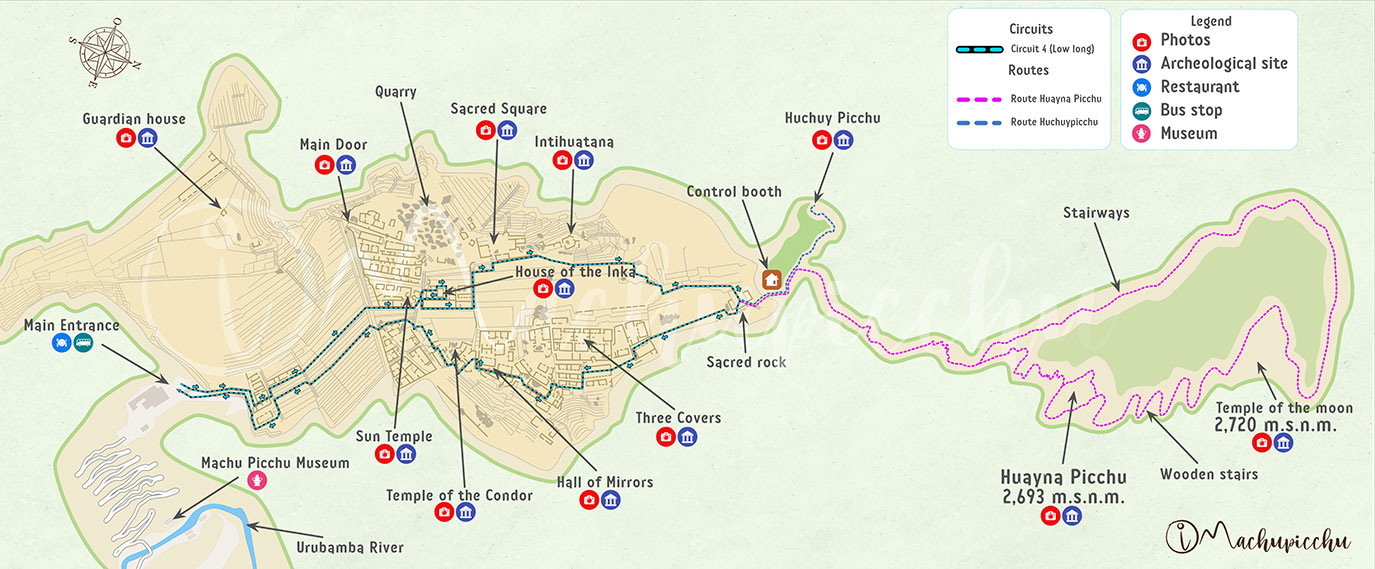Map and tour of Huayna Picchu
Huayna Picchu is the steep mountain that appears in the background on typical postcards of the city of Machu Picchu. The access road is inside Machu Picchu, north of the ruins, just behind the Sacred Rock. Below you will find the complete map of this mountain as well as the route that you will follow on the mountain and in the archaeological site of Machu Picchu.
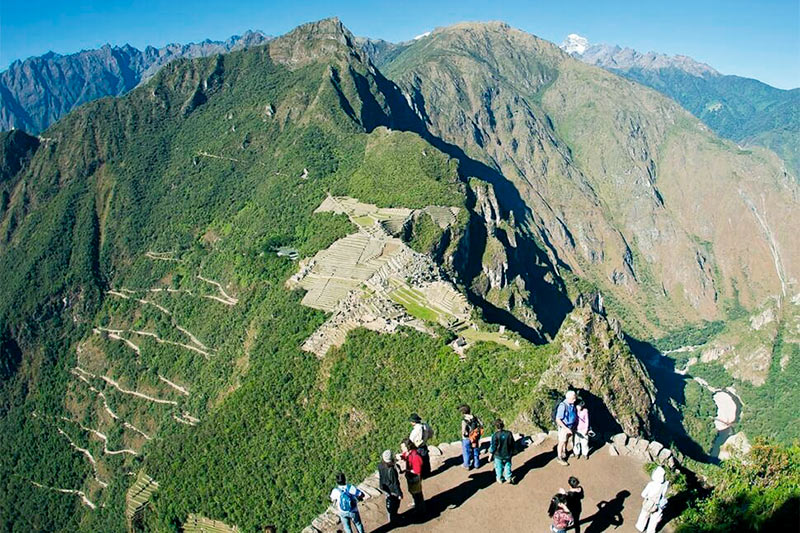
Top of the Huayna Picchu mountain
The map of Huayna Picchu
Before the tour
- The first and most important thing to know is that to visit Huayna Picchu you must buy the ‘Machupicchu with Huaynapicchu’ ticket. As its name suggests, this ticket also includes a visit to the Inca city of Machupicchu.
- Before the tour of the Huayna Picchu mountain, tourists have approximately 2 hours to tour the archaeological site of Machu Picchu.
- The constructions that you will be able to appreciate in Machu Picchu are: the Temple of the Condor, the Temple of the Sun, the Water Mirrors, the Sacred Rock, the Temple of the 3 Windows and more.
- During this tour of Machu Picchu, tourists will not be able to take the classic postcard photo of the Inca citadel. This photo can only be obtained with the ticket ‘Machupicchu Only’.
The route
- The course is 2 kilometers uphill on the slopes of a mountain. The Incas built stone steps to reach the top.
- It is believed that the walk has a challenging difficulty as some stairs have a great incline. In certain sections it is necessary to hold on to the railings on the sides.
- On your journey through the mountain you will find that a large part of the road is surrounded by very thick vegetation typical of the jungle, which, in some way, will protect you from exposed risky steps, and will allow you to advance calmly. We advise you to pay close attention on the road.
- In general, the route is simple. However, it is necessary to follow the signs and not risk your life by taking photos a few steps from the cliffs.
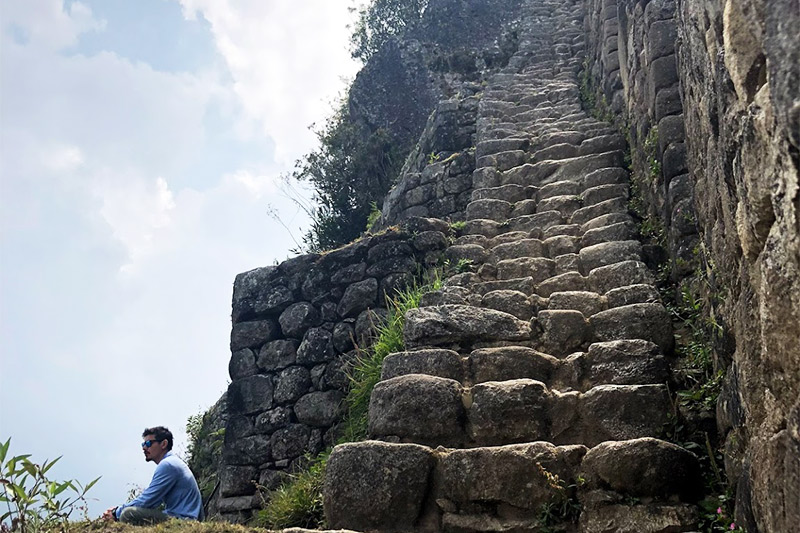
Tour of Huayna Picchu
The path of ascent
- It is a vertical path, slippery in the rainy season or due to the morning humidity.
- It has some quite narrow steps, very impressive, they cause vertigo and on rare occasions, slight panic attacks in some people.
- The stairs have steps 35 centimeters high, 70 wide and 15 centimeters deep. In certain parts, an exposed drop of about 500 meters can be seen on one of its sides.
- And when you’re at the top you’ll be greeted with something more incredible than the trail itself, privileged views, reserved only for those who made it to the top. There you will not only see the Inca city (in 360 degrees) but also its surroundings, the Andes mountain range as a background, the meandering Urubamba River at our feet, a whole natural and wonderful setting that surrounds one of the greatest Wonders of the World.
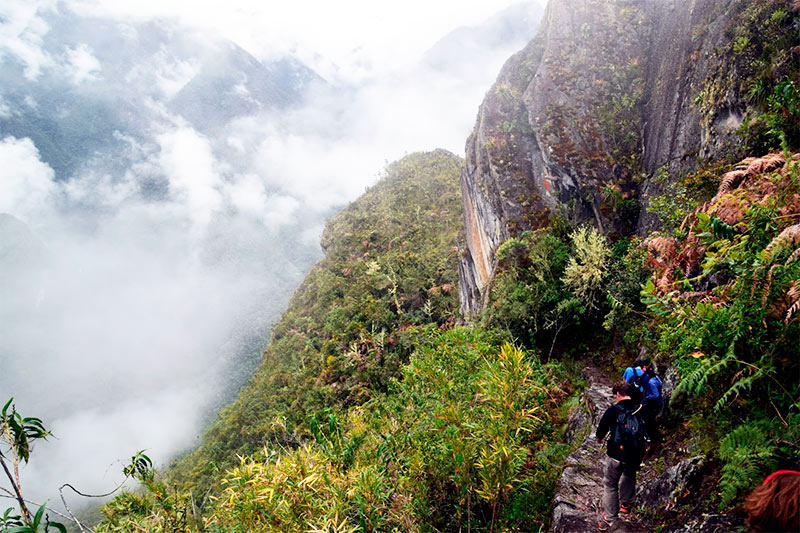
Climbing the Huayna Picchu mountain
The return
- The return path follows the same route as the uphill leg only now downhill. For many it is easier. You just have to be careful on the narrow stairs. It is recommended to hold on to the railings and go slowly, at a safe pace.
- A detour on the descent offers you access to the Temple of the Moon, also called La Great Cavern. This road will take you along a circular path that will return you to the Inca citadel of Machu Picchu. You will still have time to appreciate it as it deserves.
- On leaving the mountain, visitors still have 1 hour to see other constructions of the Inca citadel. Then, upon leaving Machu Picchu, they must return to the town of Aguas Calientes.
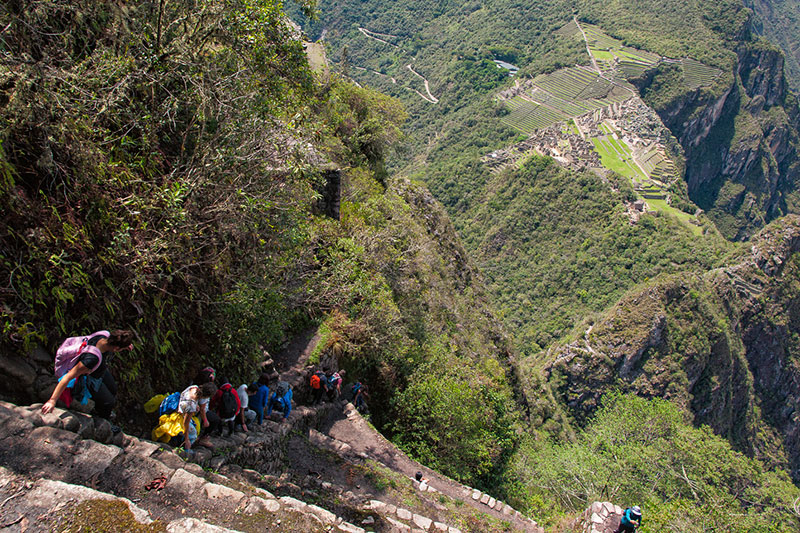
Descent of the Huayna Picchu mountain
Some advices
In the Sacred Valley of the Incas you can also practice other adventure sports such as: canoeing, zip-lining, paragliding, rock climbing and, above all, hiking.
The entire Sacred Valley of the Incas can be visited by bicycle without the need for a tour. However, for a safer and risk-free adventure, it is best to hire a tourism agency.
If you are looking for a bike tour of the Sacred Valley of the Incas, check that it is a formal tourism agency. In the internet tourism forums (for example TripAdvisor) you can read recommendations or criticisms of the various tourism agencies in Cusco.
By Ticket Machu Picchu – Last updated, August 15, 2024
